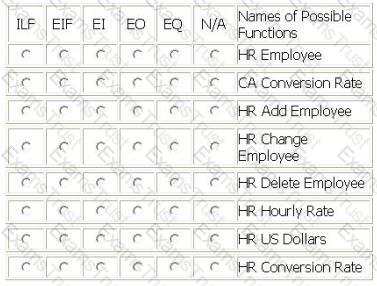The user can request the same data to be displayed in four languages. The data in the different languages are stored in user-maintained tables. How would this display of data be measured?
An enhancement project adds 3 business function attributes to each of 3 data functions. Before the enhancement each of these data functions was valued at 2 RETs and 19 DETs. Each of these data functions is maintained by the same screen in the application. What is the CHGA of these data functions?
Phase 1 of an application enhancement adds 2 business function attributes to each of 3 files. No changes were made to reference the new attributes. Prior to the enhancement each of these files was valued at 3 RETs and 12 DETs. What is the CHGA of these files?
The procedure for determining VRF is:

What is the equation used in step 3?
The Report Generation application receives data from outside the boundary, and saves the data in the Reporting Data logical file, with additional processing logic involved. The user Information is maintained in the Report Generation application in the User Account logical file. How would the data functions be counted?
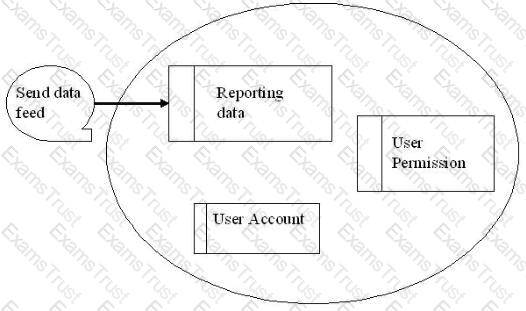
A logical data store is maintained by the application being counted. It has tax code as the key attribute and tax rate as the only other attribute. How would this data store be counted?
There are 10 ILFs in an Equity Trading application. There is an enhancement project that is modifying 10 screens and 5 reports. All screens and reports reference 6 ILFs of the Equity Trading application. No modifications are made to the ILFs. How many data functions would be counted?
The human resources department has 2 applications that use the Candidate Information file. Candidate Information contains 86 logical pieces of data.
How would you count the Candidate Information file for each Application?
Calculate the VAF for the following GSCs:
The data retrieved from the state drop down list is obtained by reading the State file that contains only state code and state description. The State file is not updated frequently as states are not added on a frequent basis. How would the drop down list be measured?
Consider the following diagram.
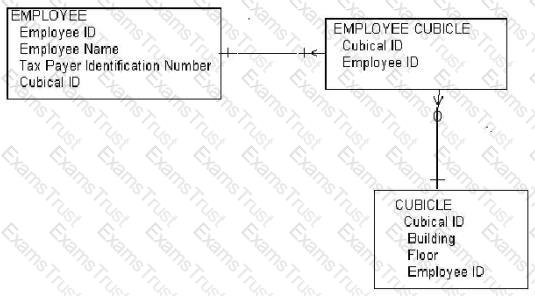
The business requirement states that an employee must have at least one cubicle, but may have an unlimited number of cubicles assigned. A cubicle can also be occupied by more than one employee at a time. How many total DETs are depicted?
An enhancement project added 3 high complexity EIs, changed 1 EI from average to low complexity and deleted 3 low complexity EIs. What is the EI contribution to enhancement function point measure?
Which scenario would yield non-zero enhancement FPs?
What is true about conversion functionality?
Which of the following statements regarding functional size measurement is true?
Business data is defined as:
An FTR is be defined as a:
Which is the first step of the Measurement process?
Which of the following equations is the correct equation to calculate the VAF?
Which of the following statements is true?
The functional complexity of an EO is based upon which of the following?
An example of the purpose of an FP count is to provide:
What is a user identifiable group of logically related data or control information referenced by the application, but maintained within the boundary of another application?
Which GSC describes the degree to which the application communicates directly with the processor?
Which of the following best describes the FP counting boundary?
Which of the following statements about an External Input is true?
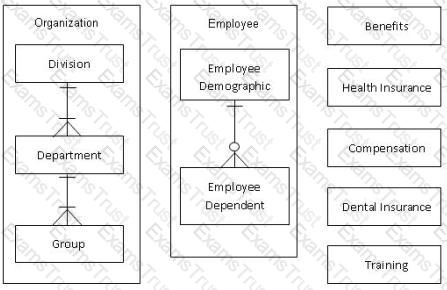
From the Names of Possible Functions listed identify the data functions for the HR application. Select N/A if a Name of Possible Function does not apply.
Identify the data functions used:
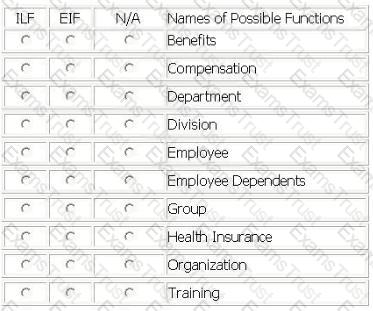
The Procurement application requires the ability to maintain information on each new supplier. The information that must be maintained on the Supplier logical file includes:
Supplier id
Supplier name
Supplier mailing address
Supplier skill
As a result of creating a new supplier record, the supplier's annual costs should be automatically calculated and saved with the other supplier information.
Orders are maintained in the Order logical file by the Procurement application. The Accounts Payable logical file is updated for each order. Line items for each order are stored in the Order Detail subgroup of the order logical file.
Backorders and delivery errors are tracked by the Procurement application on the Transparency Track Record logical file. This file is compared to each supplier's values in the Service Level Agreement logical file which is maintained by the Contract application. The Procurement application produces a report for the Legal Office of suppliers that are performing outside of their Service Level Agreement.
From the Names of Possible Functions listed identify the data functions for the Procurement application. Select N/A if a Name of Possible Function does not apply.
Identify the functions used.
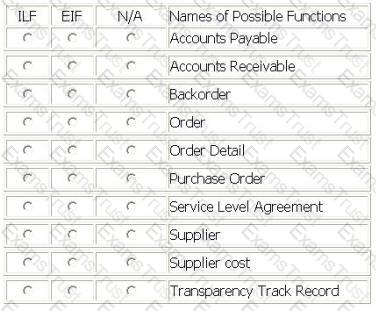
The Patient Billing application includes functionality to maintain the Patient logical file.
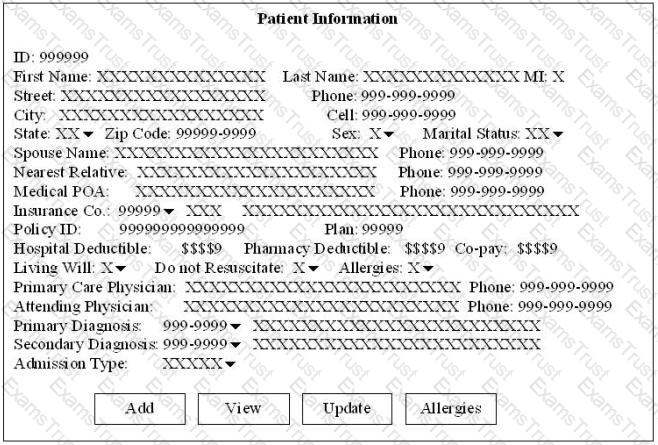
Determine the complexity for the following functions:
Select the complexity for each function:

EXAM SCHEDULING SYSTEM (ESS) - EXAM SCHEDULING FUNCTIONS
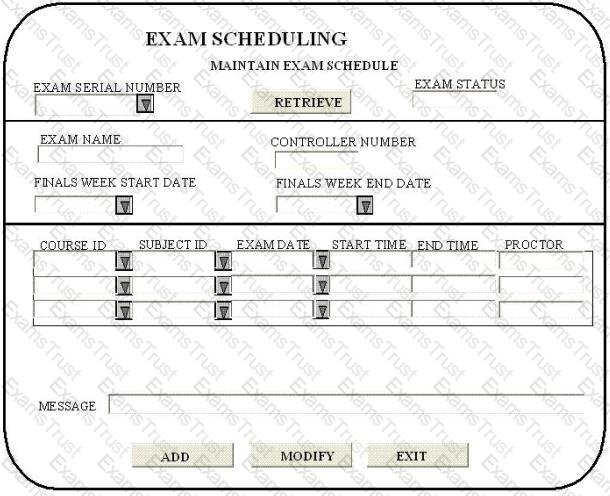
Determine the complexity for functions listed:
Select the complexity for each function:

A Call Center (CC) application is being enhanced to maintain and display 2 new pieces of information. The CC will add the 2 new DETs to all 5 of the modified transactional functions.
What is the complexity of the transactional functions after the enhancement?
Select the complexity for each function:
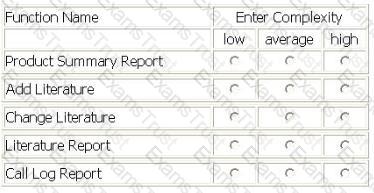
An enhancement project involves both the Human Resource (HR) application and the Mail Distribution (MD) application.
The HR application maintains all data elements in the Employee logical file. The users of the HR application require validations for employee pay grade and employee job title in the Employee logical file. The employee pay grade will be validated against the Pay Grade logical file which is maintained by the Finance application. The employee job title will be validated against the Job Title logical file which is maintained by the Compensation application.
The MD application maintains two data elements in the Employee logical file. The users of the MD application require additional validations for building and floor within the employee mailing address. The building and floor will be validated against the Building logical file which is a new file being developed by this project.
The users will use the MD application to maintain the Building logical file. The users of the MD application also maintain building and floor in the Employee logical file.
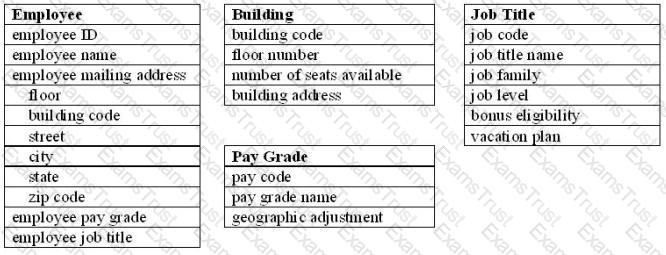
From the Names of Possible Functions listed identify the data functions for the HR application and the MD application. Select N/A if a Name of Possible Function does not apply.
Identify the data functions used:
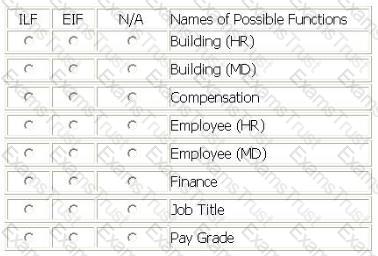
The Human Resources (HR) application contains 5 data functions.

Determine the complexity of data functions:
Select the complexity for each function:
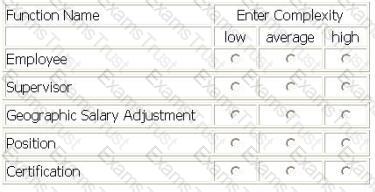
Data used by the Payroll Activity application is organized in the following logical groups:
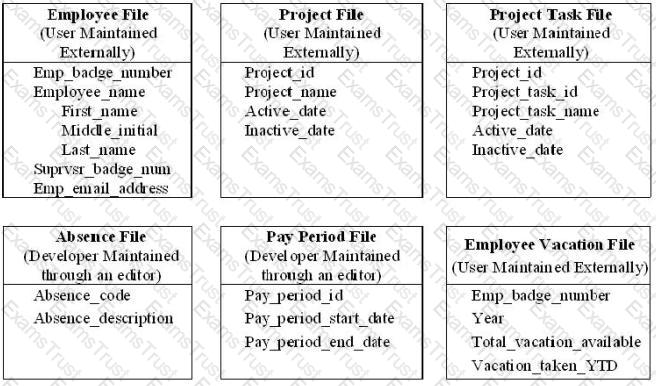
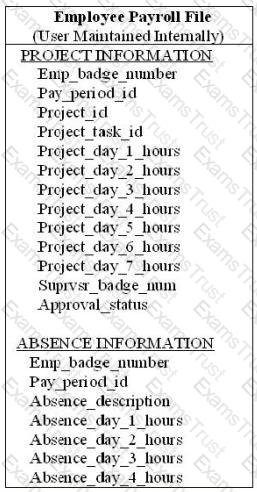
The Absence file and Pay Period file were implemented as part of the technical solution to facilitate business transactions.
From the Names of Possible Functions listed identify the data functions for the Payroll Activity application. Select N/A if a Name of Possible Function does not apply.
Identify the data functions used:
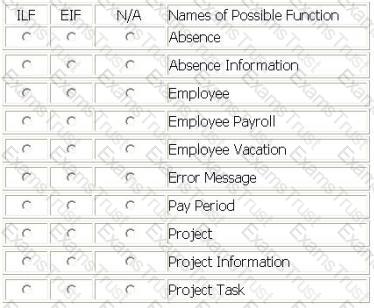
An Assets Tracking application has a batch update process. Twice a month each of the branch offices sends a transaction file to the headquarters.
Identify the functions used.
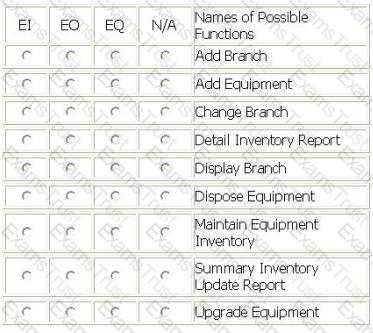
The Procurement application user requires the ability to control how and when reports are printed. The following list shows the specific user requirements for generating reports:
From the Names of Possible Functions listed identify the transactional functions for the Procurement application. Select N/A if a Name of Possible Function does not apply.
Identify the functions used:
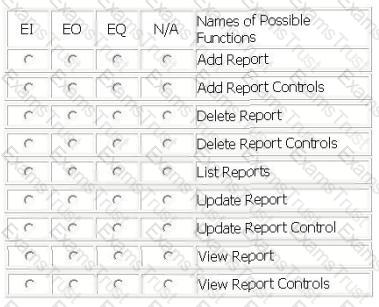
Identify the data and/or transactional functions in the following scenario:
In an international company, the user requires the Human Resources (HR) application to provide the following capabilities:
Identify the functions used.
